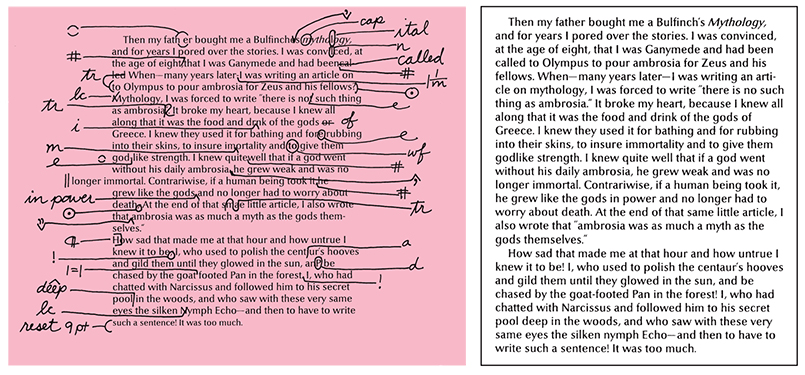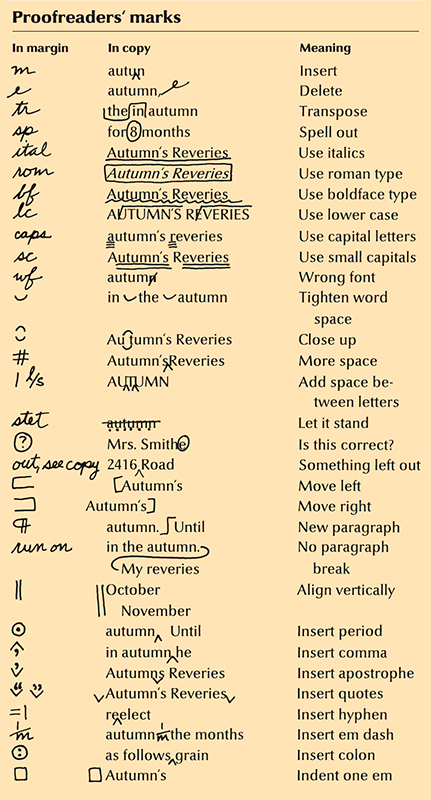Proofreading means reading copy and marking any errors found in it. The word comes from the proof (trial copy) that a typesetter would print after setting type. The proofreader compared the proof with the original manuscript, marking any errors with a set of symbols called proofreaders’ marks. The proofreader made one mark in the copy to identify the location of the correction. A corresponding mark in the margin specified the kind of correction needed. If a writer or editor prepares the text on a computer, the proofreader may read an electronic file and have no manuscript with which to compare the file. The proofreader may also have no paper copy on which to make proofreading marks and may have to make suggestions by means of electronic notes embedded in the file.

Whatever form the copy takes, the proofreader reads it carefully, looking for any misspellings or other mistakes. The proofreader also reads with an awareness of content, questioning anything inconsistent. The proofreader may also check for correct alignment and positioning of borders and pictures.
After the proof is read, the author, editor, or client makes the corrections called for by the proofreader. When no more corrections need to be made, the text is ready for printing.
Proofreaders’ marks.
Some of the most common include:
The delete sign, which resembles a small loop, indicates words or letters should be eliminated. The Latin word stet, which means let it stand, is used to restore words or letters crossed out.

Italic letters (ital) are slanting letters generally used for titles of publications and for stressed words. Roman letters (rom) are straight up-and-down. Boldface type (bf) is heavier than ordinary type. It is often used for headings.
Lower case (lc) means small letters. Old handset type was kept in sectioned boxes called cases. Small letters were kept in the case below capital letters. Almost all type is set by computer today, but capitals and small letters are still called upper case and lower case.
Wrong font (wf) means that the wrong kind of type has been used. A complete set of one design of type is called a font.
Accidental errors that occur in text are called typographical errors or typos. Author’s alterations, or aa’s, are changes, other than corrections, that the author or client has requested.
